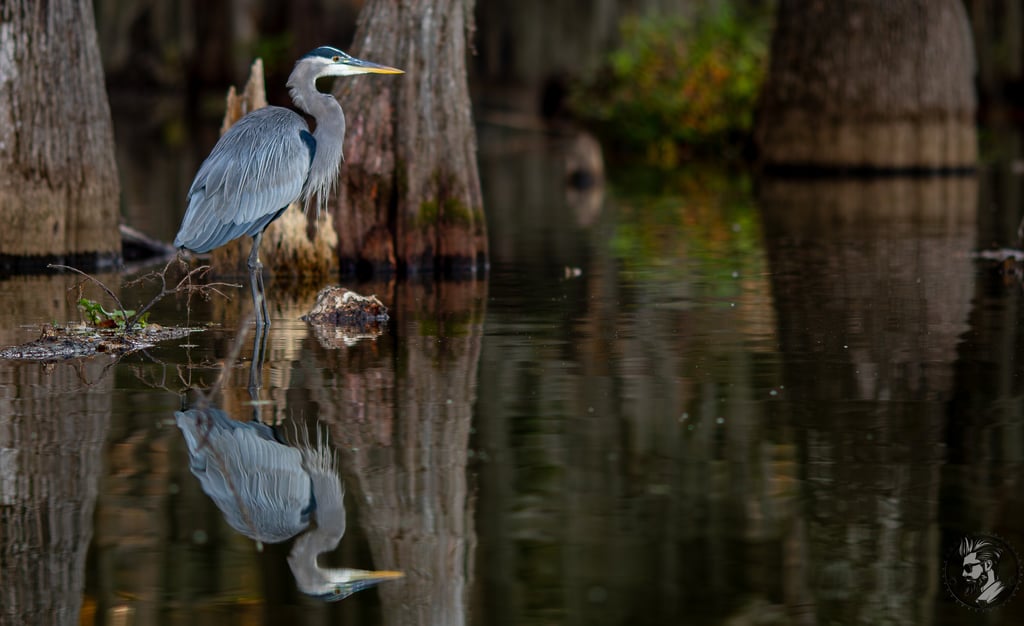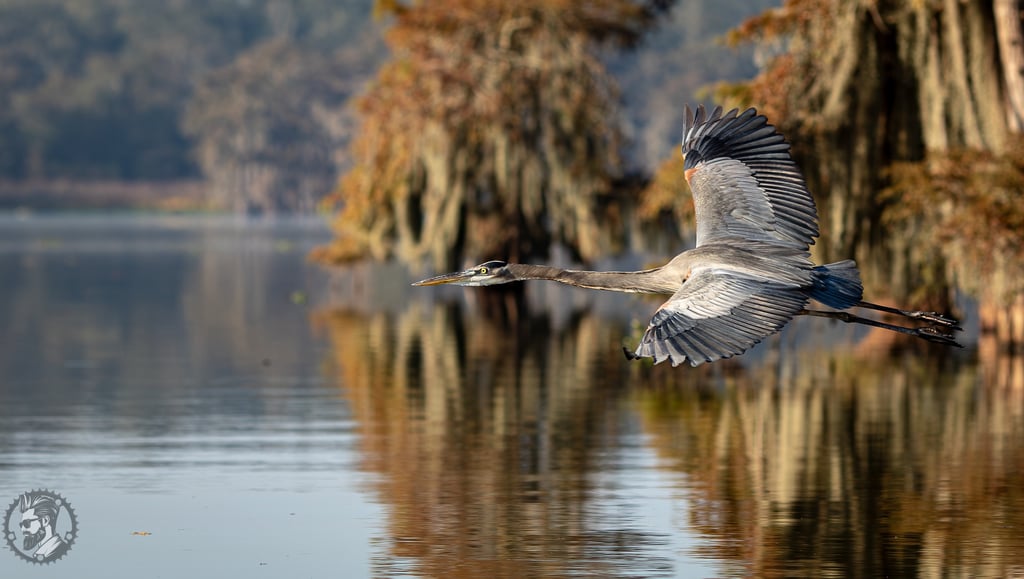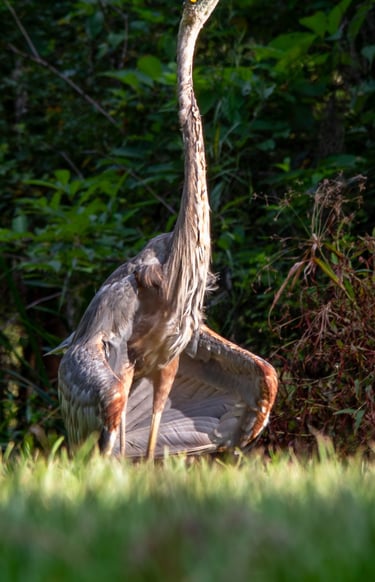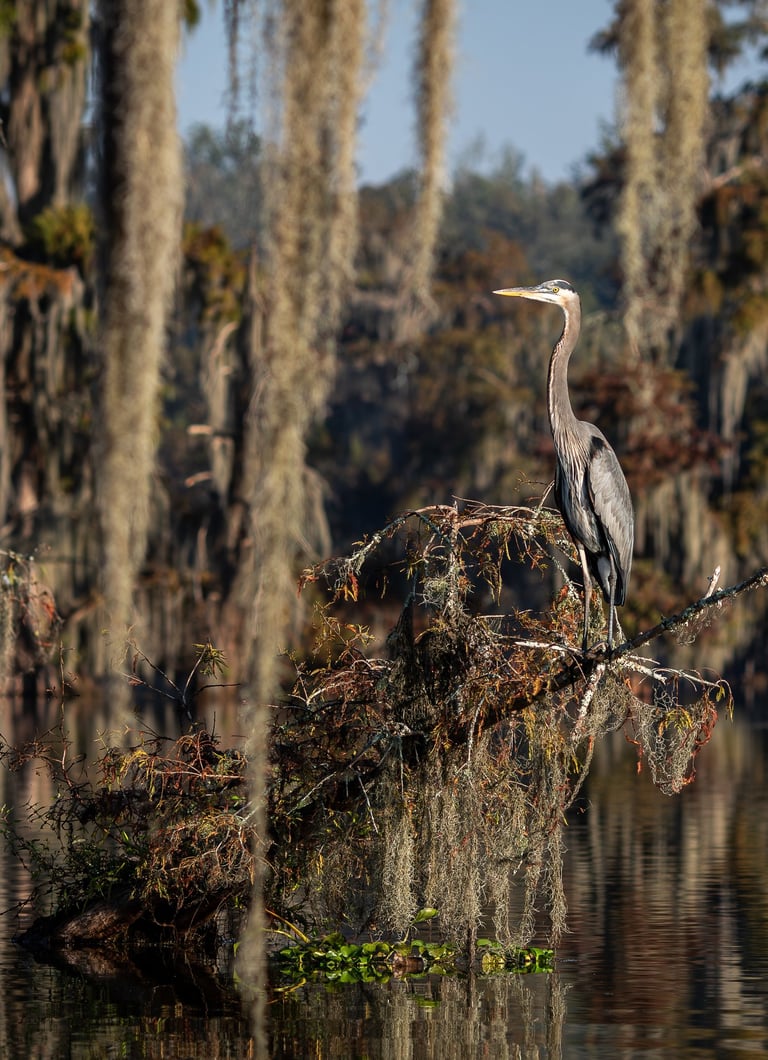The great blue heron (Ardea herodias) is a striking bird known for its graceful stance, serene demeanor, and impressive wingspan, which can stretch over six feet. With their long necks and legs, herons evoke a prehistoric elegance, often reminding observers of ancient creatures. In fact, their lineage can be traced back tens of millions of years, making them living relics of a time when the world was ruled by massive dinosaurs. Watching a great blue heron wading patiently in the marshes or flying in slow, graceful arcs, it’s easy to imagine them as part of an ancient landscape.
Habitat: Finding Peace in Marshes, Shores, and Wetlands
Great blue herons are remarkably adaptable birds, found throughout North and Central America. They thrive near bodies of water, including coastal shorelines, marshes, swamps, and rivers—anywhere they can wade and hunt for fish, their primary food source. Louisiana, with its extensive bayous and wetlands, is an ideal habitat for these birds. Here, herons blend into a rich tapestry of wildlife, contributing to the biodiversity of the region and benefiting from Louisiana’s lush ecosystems.







